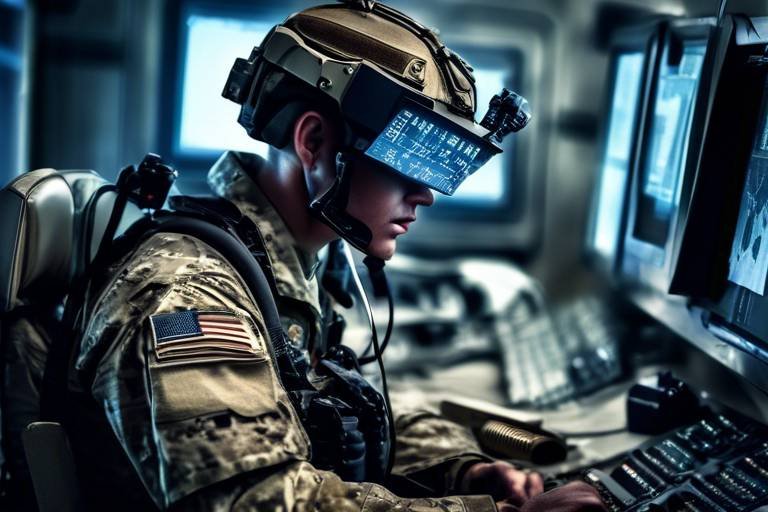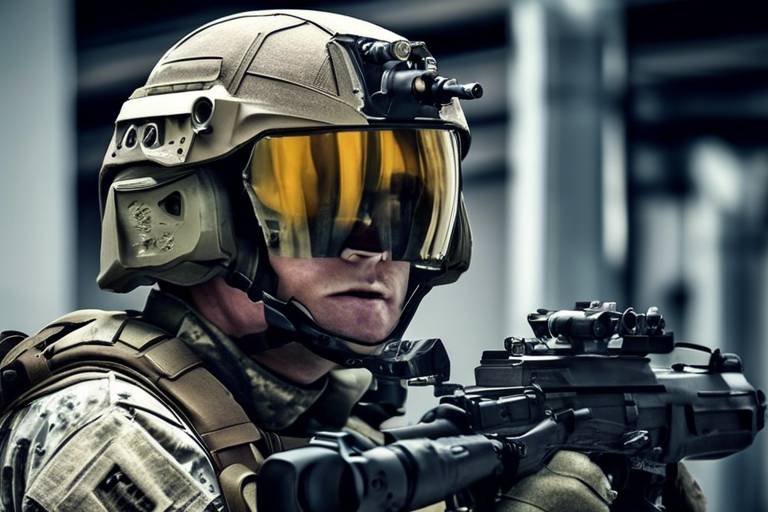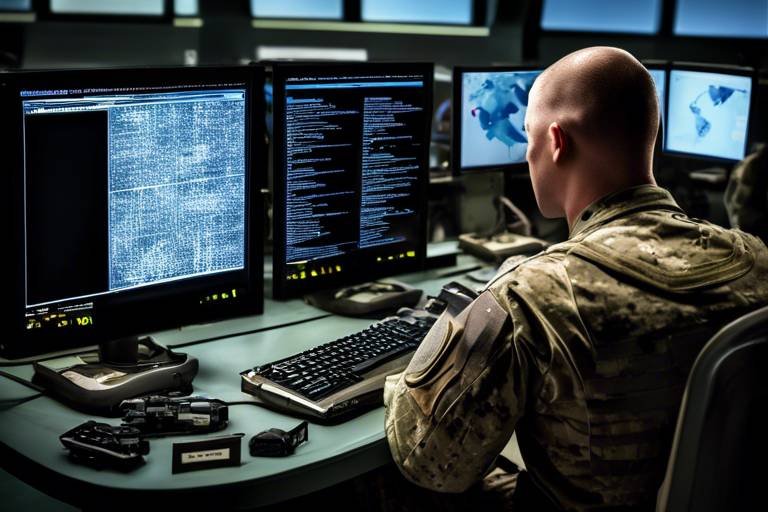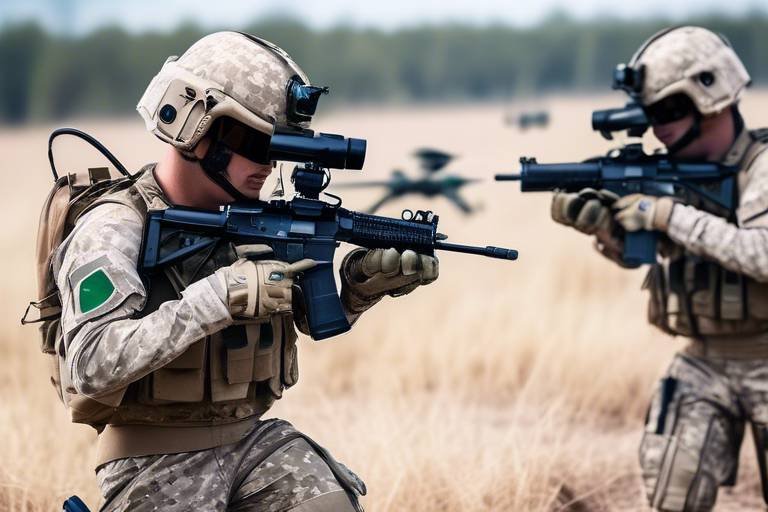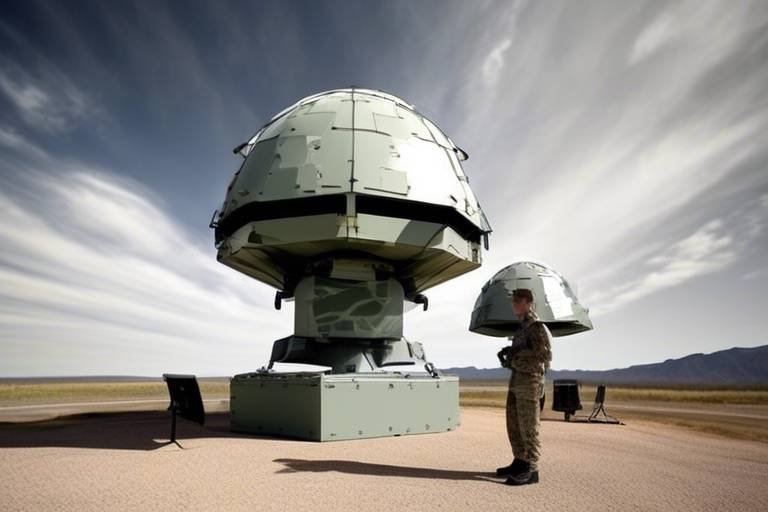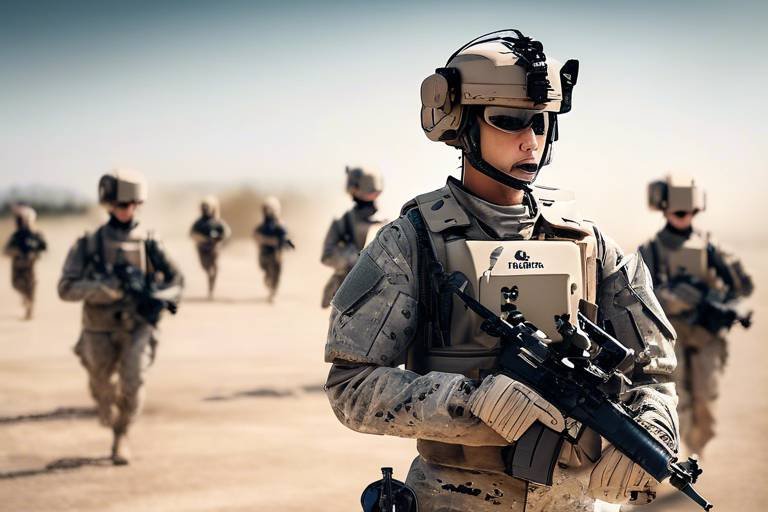The Role of Virtual Simulations in Military Training
In the ever-evolving landscape of military training, virtual simulations have emerged as a game-changer, transforming how soldiers prepare for real-world operations. Imagine a scenario where a soldier can engage in a lifelike battle without ever stepping onto a physical battlefield. This is the power of virtual simulations. They not only enhance operational readiness but also provide a versatile platform for honing decision-making skills under pressure. As we delve into the significance of these simulations, it's crucial to understand their multifaceted benefits and applications in military contexts.
One of the most compelling advantages of virtual simulations is their cost-effectiveness. Traditional military training often requires extensive resources, including travel, equipment, and personnel. In contrast, virtual simulations can significantly reduce these costs by allowing training to occur in a controlled digital environment. Furthermore, they minimize risks associated with live training exercises. Soldiers can practice complex maneuvers and strategies without the fear of injury or equipment damage.
Additionally, virtual simulations enable trainers to replicate complex scenarios that might be too dangerous or impractical to recreate in real life. For instance, a unit can train for a hostage rescue in an urban environment or simulate combat in harsh weather conditions. This ability to replicate various situations ensures that military personnel are well-prepared for any challenges they might face on the battlefield.
The realm of virtual simulations is vast and diverse, encompassing various types designed to meet specific training needs. At one end of the spectrum, we have computer-based training modules that serve as the foundation for military education. These programs offer interactive learning experiences, allowing soldiers to familiarize themselves with equipment, protocols, and tactics before moving on to more immersive training.
Computer-based training is essential for building foundational knowledge and skills. These interactive modules are designed to be engaging and informative, often incorporating multimedia elements to enhance learning. By mastering the basics in a digital format, soldiers can approach more complex scenarios with confidence and clarity.
On the other hand, scenario-based training takes immersion to the next level. Here, participants are placed in realistic situations that mimic the unpredictability of actual combat. This form of training is crucial for developing critical thinking and decision-making skills. Imagine being in a simulated environment where every decision you make affects the outcome of the mission. This dynamic training approach fosters adaptability and prepares soldiers to respond effectively to evolving challenges.
Another significant aspect of virtual simulations is the ability to provide effective assessment and feedback. Trainers can evaluate a soldier's performance in real-time, identifying strengths and areas for improvement. This immediate feedback loop allows for tailored training sessions that cater to individual needs, ensuring that every soldier can enhance their skills and knowledge progressively.
As technology advances, we see the rise of immersive environments such as virtual reality (VR) and augmented reality (AR). These platforms create hyper-realistic training experiences that engage soldiers on multiple sensory levels. Picture donning a VR headset and being transported to a combat zone, where you can practice maneuvers as if you were actually there. Such experiences not only enhance skill retention but also significantly increase overall training effectiveness.
Integrating virtual simulations with live training exercises is another innovative approach that enhances realism. By combining theoretical knowledge with practical application, military personnel can bridge the gap between classroom learning and field operations. This cohesive training framework prepares soldiers for real-world challenges, ensuring they can apply their skills effectively when it matters most.
Hybrid training models leverage both virtual and live training components, providing soldiers with varied contexts to practice their skills. This comprehensive preparation is essential for adapting to diverse operational scenarios. It allows for a more rounded training experience, where soldiers can transition smoothly from virtual exercises to live drills.
By reducing the need for physical resources and travel, hybrid models optimize training budgets. This efficiency ensures that military units maintain high training standards while maximizing the use of available resources. The result is a more sustainable training approach that can adapt to changing needs and circumstances.
The future of virtual simulations in military training looks incredibly promising. With rapid advancements in technology, we can expect to see even more sophisticated training tools that enhance operational readiness and adaptability. One exciting trend is the integration of artificial intelligence (AI) into virtual simulations. This technology can personalize training experiences, adapting scenarios in real-time to challenge individual soldiers and foster their development.
AI integration will revolutionize how simulations are conducted. Imagine a training program that learns from each soldier's performance and adjusts the difficulty level accordingly. This personalized approach will ensure that every soldier receives the training they need to excel, making them more effective on the battlefield.
Additionally, future simulations will likely include enhanced collaboration tools that allow military personnel to train together remotely. This capability is crucial for fostering teamwork and communication skills, which are essential for successful missions. As soldiers train together, regardless of their physical location, they will develop a stronger sense of camaraderie and shared purpose.
- What are virtual simulations? Virtual simulations are digital training environments that replicate real-world scenarios for military personnel to practice skills and decision-making.
- How do virtual simulations benefit military training? They provide cost-effective, risk-free training, allowing for the replication of complex scenarios and immediate feedback for improvement.
- What types of virtual simulations are used? Types include computer-based training, scenario-based training, and immersive environments like VR and AR.
- Can virtual simulations replace live training? No, they complement live training by providing a safe space for practice while enhancing overall training effectiveness.

Benefits of Virtual Simulations
Virtual simulations have revolutionized military training, offering a plethora of benefits that traditional training methods simply can't match. One of the most significant advantages is cost-effectiveness. By utilizing virtual environments, military organizations can significantly reduce expenses associated with physical training facilities, equipment, and travel. Imagine being able to conduct extensive training exercises without the need for fuel, ammunition, or even a physical location. This not only saves money but also allows for more frequent and comprehensive training sessions.
Another key benefit is the risk reduction that virtual simulations provide. In real-life training scenarios, soldiers often face dangerous situations that can lead to injuries or even fatalities. Virtual simulations create a safe and controlled environment where military personnel can practice their skills without the inherent risks of live training. This is particularly vital when training for high-stakes missions where the margin for error is minimal.
Moreover, virtual simulations allow for the replication of complex scenarios that might be difficult or impossible to recreate in real life. Whether it's a simulated battlefield, a hostage rescue mission, or a natural disaster response, these environments can mimic a wide range of situations that soldiers may encounter. This means they can train for various scenarios, enhancing their preparedness and adaptability. For instance, a soldier can experience the chaos of combat or the pressure of a crisis situation multiple times, honing their decision-making skills and reaction times.
Furthermore, virtual simulations promote collaborative training. Soldiers can engage in joint exercises with units from different locations, fostering teamwork and communication skills. This is especially important in modern military operations, where coordination between various branches and allied forces is crucial. The ability to train together, regardless of geographical barriers, can lead to more cohesive unit dynamics and improved mission outcomes.
Lastly, the feedback mechanisms integrated within virtual simulations are invaluable. After each training session, participants can receive detailed assessments of their performance. This immediate feedback loop allows trainers to identify strengths and weaknesses, tailoring future training to address specific needs. As a result, soldiers can continuously improve their skills and readiness, ensuring that they are always at the top of their game.
| Benefit | Description |
|---|---|
| Cost-Effectiveness | Reduces expenses related to physical training facilities, equipment, and travel. |
| Risk Reduction | Provides a safe environment for training without the dangers of live exercises. |
| Complex Scenario Replication | Enables training for a wide range of realistic scenarios that may be hard to simulate in real life. |
| Collaborative Training | Allows soldiers to train together across different locations, enhancing teamwork. |
| Immediate Feedback | Offers detailed assessments to improve skills and readiness continuously. |
- What are virtual simulations? Virtual simulations are computer-generated environments that mimic real-world scenarios for training purposes.
- How do virtual simulations reduce costs? They eliminate the need for physical resources, travel, and equipment, allowing for more efficient training budgets.
- Are virtual simulations safe? Yes, they provide a safe training environment, reducing the risk of injury associated with live training exercises.
- Can virtual simulations replicate real-life scenarios? Absolutely! They can simulate a variety of complex situations that soldiers may face in the field.
- How do feedback mechanisms work in virtual simulations? After training sessions, participants receive performance assessments that help identify areas for improvement.

Types of Virtual Simulations
When it comes to military training, the term virtual simulations encompasses a wide variety of formats and technologies, each tailored to meet specific training needs. These simulations can be categorized into two main types: computer-based training and immersive environments. Each type plays a crucial role in preparing military personnel for the challenges they may face in real-world situations.
Computer-based training serves as the foundation of virtual simulations. These programs often consist of interactive modules that allow soldiers to learn about equipment, protocols, and tactical strategies. Imagine a soldier sitting in front of a computer, navigating through a lifelike simulation that mimics real-world scenarios. This form of training is essential because it provides the necessary knowledge and skills before engaging in more complex simulations. It’s like learning to ride a bike with training wheels before taking on the open road.
Within the realm of computer-based training, scenario-based training stands out. This method immerses participants in realistic situations, requiring them to make decisions and respond to dynamic challenges. For instance, a soldier may be placed in a virtual hostage rescue scenario, where they must assess the environment, communicate with their team, and execute a plan under pressure. This type of training enhances critical thinking and decision-making skills, as soldiers must adapt to evolving circumstances, much like a chess player anticipating their opponent's next move.
Another vital aspect of computer-based training is the incorporation of assessment and feedback mechanisms. These tools allow trainers to evaluate performance, pinpoint areas for improvement, and customize future training sessions to meet individual needs. Imagine receiving immediate feedback after a simulation—this instant critique not only boosts learning but also fosters a growth mindset among soldiers. It's akin to a coach reviewing game footage with a player to refine their skills.
On the other end of the spectrum, immersive environments leverage cutting-edge technologies like virtual reality (VR) and augmented reality (AR) to create lifelike training experiences. These environments engage soldiers in ways that traditional training methods simply cannot. Picture a soldier donning a VR headset, stepping into a bustling battlefield where they can interact with their surroundings and practice their skills in a risk-free setting. This level of immersion promotes retention of skills and significantly enhances overall training effectiveness.
Immersive environments can also be tailored to replicate specific scenarios, from urban warfare to counter-terrorism operations. By providing a safe space to practice high-stakes situations, soldiers can build confidence and competence, ensuring they are well-prepared for the unpredictability of real missions. In essence, immersive training is like a rehearsal for a performance, allowing soldiers to perfect their roles before the curtain rises.
In summary, the types of virtual simulations in military training are diverse and serve distinct purposes. From foundational computer-based training to advanced immersive environments, each type enhances the skills, knowledge, and readiness of military personnel. As technology continues to evolve, we can expect these simulations to become even more sophisticated, further bridging the gap between training and real-world application.
- What are virtual simulations? Virtual simulations are computer-generated environments that allow military personnel to train in realistic scenarios without the associated risks of live training.
- How do immersive environments enhance training? Immersive environments, such as VR and AR, create realistic experiences that engage soldiers and promote skill retention.
- What is scenario-based training? Scenario-based training immerses participants in realistic situations, enhancing critical thinking and decision-making skills.
- How is feedback integrated into virtual training? Feedback mechanisms in virtual training allow trainers to evaluate performance and tailor future training sessions to individual needs.

Computer-Based Training
Computer-based training (CBT) has revolutionized the way military personnel acquire essential knowledge and skills. Imagine stepping into a digital classroom, where the complexities of warfare are broken down into manageable, interactive modules. This method not only makes learning engaging but also ensures that soldiers are well-prepared before they dive into more intricate simulations. Through CBT, service members can familiarize themselves with various equipment, protocols, and strategies—all from the comfort of their own training facilities.
One of the most significant advantages of computer-based training is its flexibility. Soldiers can access training materials anytime and anywhere, allowing them to learn at their own pace. This is particularly beneficial for those who may have varying schedules or are stationed in remote locations. Additionally, CBT can be tailored to meet the specific needs of different units, ensuring that each soldier receives relevant training that aligns with their roles and responsibilities.
Moreover, CBT can incorporate elements such as simulated scenarios and interactive quizzes, which not only enhance engagement but also reinforce learning. For instance, a soldier might complete a module on operating a new piece of equipment and then immediately transition into a simulation that tests their knowledge in a realistic setting. This seamless integration of theory and practice is crucial for fostering a comprehensive understanding of military operations.
To illustrate the effectiveness of computer-based training, consider the following table that highlights key features and benefits:
| Feature | Benefit |
|---|---|
| Interactive Modules | Engages learners and promotes retention of information. |
| On-Demand Access | Allows soldiers to learn at their own pace, accommodating different schedules. |
| Scenario Simulations | Prepares soldiers for real-life situations, enhancing decision-making skills. |
| Customizable Content | Addresses specific training needs of various military units. |
In conclusion, computer-based training serves as a vital foundation for military personnel, equipping them with the knowledge and skills necessary for success on the battlefield. By leveraging technology, the military can ensure that its troops are not only knowledgeable but also capable of adapting to the ever-changing dynamics of modern warfare.
- What is computer-based training? - Computer-based training refers to educational programs delivered via computers, allowing for interactive and flexible learning experiences.
- How does CBT benefit military personnel? - CBT provides soldiers with on-demand access to training materials, interactive simulations, and the ability to learn at their own pace, enhancing their readiness for real-world scenarios.
- Can CBT be customized for different military units? - Yes, computer-based training can be tailored to meet the specific needs of various military units, ensuring relevant and effective training.
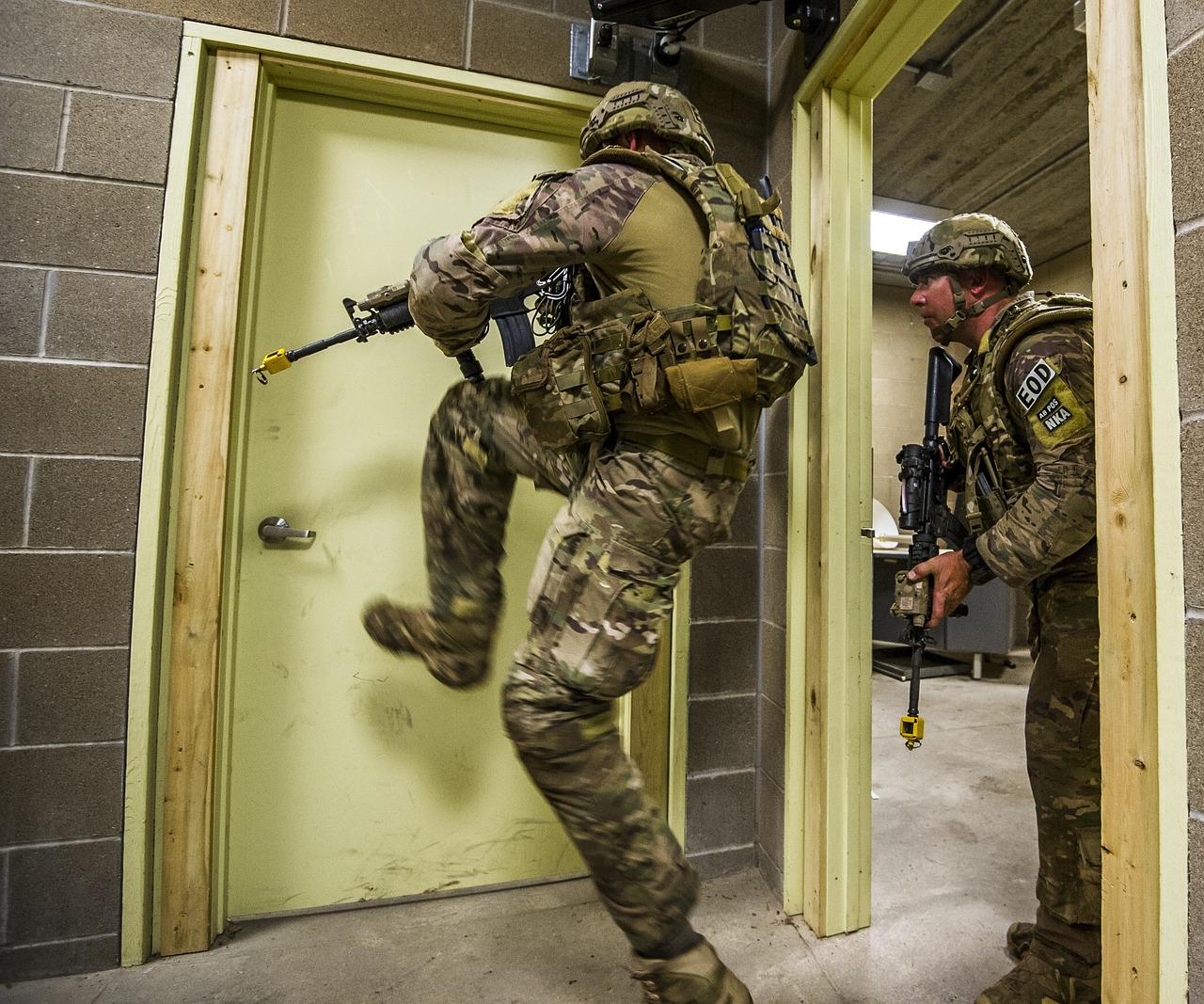
Scenario-Based Training
Scenario-based training is a transformative approach that immerses military personnel in realistic situations, significantly enhancing their critical thinking and decision-making skills. Imagine being placed in a high-stakes environment where every choice you make could have serious consequences. This kind of training simulates real-world challenges, pushing soldiers to think on their feet and respond to dynamic situations in a controlled setting.
The essence of scenario-based training lies in its ability to replicate complex operational environments. Whether it's a simulated combat zone or an intricate humanitarian mission, soldiers are exposed to scenarios that mirror the unpredictability of actual military operations. This method not only builds confidence but also fosters teamwork and communication, as participants often need to collaborate and strategize with their peers to navigate through these challenges successfully.
One of the key advantages of scenario-based training is the opportunity for participants to learn from their mistakes in a safe environment. Rather than facing real-life repercussions, soldiers can experiment with different strategies, analyze outcomes, and refine their skills. This iterative learning process is invaluable, as it equips them with the experience and knowledge necessary to make informed decisions when it truly matters.
Furthermore, scenario-based training can be tailored to meet specific training objectives and operational requirements. For example, a unit preparing for urban warfare might engage in scenarios that involve navigating through complex city landscapes, while another unit might focus on counter-terrorism tactics in a rural setting. The adaptability of this training method ensures that all aspects of military readiness are addressed, creating well-rounded soldiers capable of handling a variety of situations.
To illustrate the effectiveness of scenario-based training, consider the following table that outlines key components and benefits:
| Component | Benefit |
|---|---|
| Realistic Simulations | Enhances engagement and retention of skills |
| Dynamic Challenges | Improves adaptability and problem-solving abilities |
| Feedback Mechanisms | Facilitates continuous improvement and learning |
| Team Collaboration | Strengthens communication and teamwork skills |
In conclusion, scenario-based training is not just about practicing skills; it’s about creating an immersive experience that prepares soldiers for the realities of military operations. By engaging in these realistic scenarios, military personnel develop the agility and confidence needed to succeed in high-pressure situations, ultimately enhancing their overall effectiveness on the battlefield.
Q1: What is scenario-based training?
A1: Scenario-based training is a method that immerses military personnel in realistic situations to enhance their critical thinking and decision-making skills through practical experience.
Q2: How does scenario-based training differ from traditional training?
A2: Unlike traditional training, which may focus on rote memorization or theoretical knowledge, scenario-based training emphasizes real-world application, allowing participants to engage in dynamic, complex environments.
Q3: Can scenario-based training be customized for different military units?
A3: Yes, scenario-based training can be tailored to meet specific objectives and operational requirements of different military units, ensuring relevance and effectiveness in training.
Q4: What are the benefits of using scenario-based training?
A4: Benefits include enhanced engagement, improved problem-solving abilities, continuous learning through feedback, and strengthened teamwork and communication skills.

Assessment and Feedback
In the realm of military training, are critical components that significantly enhance the learning experience. Virtual simulations are designed not just to train, but to evaluate and refine the skills of military personnel. Imagine stepping into a training scenario where your every move is monitored, analyzed, and critiqued in real-time. This is the power of modern virtual simulations. They provide a platform where soldiers can engage in realistic exercises while receiving immediate feedback on their performance.
One of the key benefits of virtual simulations is the ability to implement comprehensive assessment tools. These tools gather data on various performance metrics, such as decision-making speed, accuracy in task execution, and even teamwork dynamics. For instance, after completing a simulated mission, a soldier might receive a detailed report outlining their strengths and areas needing improvement. This feedback loop is essential for fostering growth and ensuring that each training session is tailored to meet individual needs.
Moreover, effective feedback mechanisms can take many forms. They can include:
- Real-time feedback: Instructors can provide immediate insights during the simulation, helping soldiers adjust their strategies on the fly.
- Post-simulation debriefs: After a training session, soldiers can discuss their experiences with instructors, gaining insights that might not be evident during the simulation.
- Performance analytics: Detailed analytics can help soldiers track their progress over time, making it easier to set goals and measure improvement.
By harnessing these feedback mechanisms, military training becomes a dynamic process. Soldiers are not just passive recipients of information; they are active participants in their own development. This engagement is crucial for building the confidence and competence necessary for real-world operations. The ability to learn from mistakes in a safe environment translates to better performance when it matters most.
As technology continues to evolve, the future of assessment and feedback in virtual simulations looks even more promising. Innovations such as machine learning algorithms can analyze performance data to provide personalized training recommendations, ensuring that each soldier receives the most effective training possible. This level of customization is akin to having a personal coach who understands your unique strengths and weaknesses, guiding you to become the best version of yourself.
In conclusion, the integration of robust assessment and feedback mechanisms within virtual simulations not only enhances the training experience but also prepares military personnel for the complexities of modern warfare. By embracing these tools, the military can ensure that its forces are not only ready to face challenges but are also continuously evolving to meet the demands of an ever-changing battlefield.
- What are virtual simulations? Virtual simulations are computer-generated environments that replicate real-world scenarios for training purposes.
- How do assessments work in virtual simulations? Assessments track performance metrics during simulations, providing feedback on strengths and areas for improvement.
- Can virtual simulations replace live training? While they offer many advantages, virtual simulations are best used in conjunction with live training to ensure comprehensive skill development.
- What technologies are used in virtual simulations? Technologies include virtual reality (VR), augmented reality (AR), and advanced computer-based training systems.
- How does feedback enhance training? Feedback helps soldiers learn from their experiences, making them more effective in real-world situations.

Immersive Environments
, such as virtual reality (VR) and augmented reality (AR), are revolutionizing the way military personnel train. These technologies create a realistic training experience that captivates soldiers, allowing them to engage in scenarios that closely mimic real-world operations. Imagine stepping into a battlefield simulation where every sound, sight, and sensation feels authentic. This level of immersion not only makes training more engaging but also enhances the retention of skills and knowledge.
The effectiveness of immersive environments can be attributed to their ability to simulate complex and dynamic situations that are often difficult to replicate in traditional training settings. For instance, a soldier can experience a helicopter insertion into a hostile zone, complete with environmental variables like weather conditions and enemy movements. This is far more impactful than simply reading about such scenarios in a manual or watching a video.
Furthermore, these environments allow for immediate feedback and assessment. As soldiers navigate through their training exercises, they can receive real-time data on their performance, helping them to understand their strengths and weaknesses. This feedback loop is crucial for developing critical thinking and decision-making skills in high-pressure situations.
In addition to individual training, immersive environments foster teamwork and collaboration. Soldiers can participate in joint exercises, working together to achieve mission objectives, which is essential for building camaraderie and communication skills. The ability to train as a unit in a simulated environment prepares them for the realities of working together in actual combat situations.
As technology continues to evolve, the potential for immersive environments in military training is expanding. Future advancements may include enhanced sensory feedback, such as haptic technology, which allows trainees to feel the impact of their actions within the simulation. This level of realism could further bridge the gap between training and actual combat, ensuring that soldiers are not just prepared but are also confident in their abilities.
In summary, immersive environments represent a significant leap forward in military training. By providing realistic and engaging experiences, they enhance skill retention, improve decision-making, and foster teamwork among military personnel. As we look to the future, the integration of these technologies will undoubtedly continue to shape the landscape of military training.
- What are immersive environments?
Immersive environments refer to training simulations that use virtual reality or augmented reality to create realistic scenarios for military personnel.
- How do immersive environments enhance training?
They provide realistic experiences that improve skill retention, critical thinking, and teamwork, preparing soldiers for real-world operations.
- What technologies are used in immersive environments?
Technologies such as virtual reality (VR), augmented reality (AR), and haptic feedback systems are commonly used to create immersive experiences.
- Can immersive environments be used for team training?
Yes, they allow soldiers to train together in simulated scenarios, enhancing communication and collaboration skills essential for successful missions.

Integration with Live Training
Integrating virtual simulations with live training exercises is a game-changer in military education. Imagine a world where soldiers can practice their skills in a virtual environment that mirrors real-life scenarios, all while still engaging in traditional hands-on training. This combination not only enhances the realism of the training experience but also prepares military personnel for the complexities of actual operational environments. When these two training methodologies are combined, the result is a comprehensive program that bridges the gap between theory and practice.
The integration of virtual simulations with live training exercises allows for a more cohesive training framework. For instance, soldiers can first engage in a virtual simulation where they familiarize themselves with equipment and tactics, followed by live exercises where they apply what they’ve learned in real-world settings. This approach offers several advantages:
- Enhanced Realism: By simulating real-world conditions, soldiers can experience the pressure and unpredictability of actual combat situations.
- Improved Skill Retention: Repeating scenarios in both virtual and live formats reinforces learning and helps soldiers retain critical skills.
- Increased Safety: Virtual simulations allow soldiers to practice high-risk maneuvers without the dangers associated with live training.
Moreover, hybrid training models that utilize both virtual simulations and live exercises can significantly optimize resource allocation. Training budgets are often tight, and the ability to reduce costs associated with travel and physical resources is invaluable. By leveraging technology, military units can maintain high training standards without the exorbitant expenses typically associated with extensive live training exercises.
As military organizations continue to evolve, the integration of virtual simulations with live training will become increasingly essential. The ability to train effectively in diverse contexts prepares soldiers not just for the battlefield but also for the complexities of modern warfare, where adaptability and quick decision-making are paramount. This holistic approach to training ensures that military personnel are not only well-prepared but also confident in their skills when they face real-world challenges.
- What are virtual simulations? Virtual simulations are computer-generated environments that replicate real-world scenarios for training purposes.
- How do virtual simulations enhance military training? They provide a safe space for soldiers to practice skills, improve decision-making, and experience realistic scenarios without the associated risks.
- Can virtual simulations replace live training? While they are highly effective, virtual simulations are best used in conjunction with live training to provide a comprehensive learning experience.
- What future trends can we expect in military training? Advancements in technology, such as artificial intelligence and improved collaboration tools, will likely enhance the effectiveness of virtual simulations.

Hybrid Training Models
Hybrid training models are revolutionizing the way military personnel prepare for their missions. By combining virtual simulations with live training exercises, these models create a comprehensive learning environment that caters to the diverse needs of soldiers. Imagine being able to practice a complex maneuver in a virtual setting, where you can make mistakes without real-world consequences, and then immediately apply what you've learned in a physical training scenario. This blend of theory and practice not only enhances skill retention but also boosts confidence among troops.
One of the most significant advantages of hybrid training models is their ability to adapt to various operational contexts. For instance, a soldier might first engage in a virtual simulation that replicates a specific combat situation, allowing them to strategize and develop tactical responses. Afterward, they can transition to a live training exercise where they execute those strategies in real time. This method ensures that soldiers are not just memorizing procedures, but are genuinely understanding how to react under pressure.
Moreover, hybrid training models are designed to be cost-effective. By reducing the need for extensive physical resources and travel, military units can allocate their budgets more efficiently. For example, instead of transporting large groups of soldiers to a training facility, they can utilize virtual platforms to conduct initial training sessions. This not only saves money but also allows for a more flexible training schedule that can accommodate the busy lives of military personnel.
In addition to the logistical benefits, hybrid training models foster a sense of camaraderie among soldiers. When teams can train together in both virtual and live settings, they build stronger relationships. These connections are crucial for effective communication and teamwork during real missions. The ability to practice together, even when physically apart, strengthens the bonds that are essential for operational success.
As we look to the future, the integration of advanced technologies into hybrid training models will only enhance their effectiveness. For instance, incorporating artificial intelligence can create personalized training modules that adapt to each soldier's skill level and learning pace. This means that whether a soldier is a seasoned veteran or a newcomer, they will receive tailored training that meets their unique needs.
In summary, hybrid training models represent a significant advancement in military training methodologies. By effectively blending virtual simulations with live exercises, these models not only improve skill acquisition and retention but also promote teamwork and resource efficiency. As technology continues to evolve, we can expect these training models to become even more sophisticated, further enhancing the operational readiness of our military personnel.
- What are hybrid training models? Hybrid training models combine virtual simulations with live training exercises to create a comprehensive learning environment for military personnel.
- How do hybrid training models benefit soldiers? They enhance skill retention, boost confidence, and foster teamwork while being cost-effective and adaptable to various operational contexts.
- Can hybrid training models be customized? Yes, advanced technologies like artificial intelligence can personalize training experiences to meet individual soldiers' needs.
- What role does technology play in hybrid training? Technology enhances the efficiency and effectiveness of training by providing realistic scenarios and facilitating remote collaboration among soldiers.
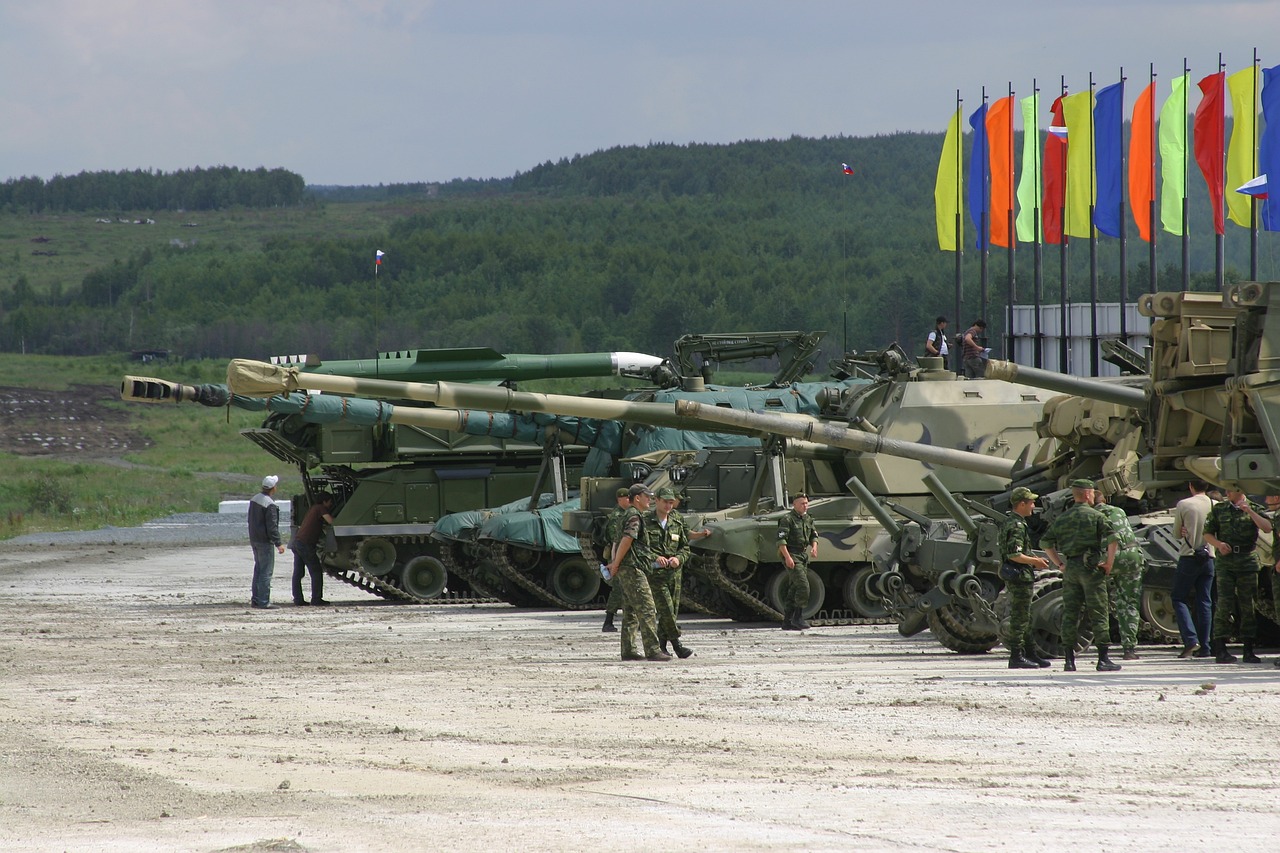
Cost and Resource Efficiency
In the ever-evolving landscape of military training, have become paramount. Traditional training methods often require significant financial and logistical investments, from fuel for vehicles to maintenance of equipment and the need for extensive training grounds. However, with the advent of virtual simulations, military organizations can significantly reduce these costs while maintaining, or even enhancing, training effectiveness. Imagine being able to conduct a full-scale military exercise without the need for physical deployment; that's the power of virtual training.
One of the most compelling advantages of virtual simulations is their ability to minimize the need for physical resources. For instance, instead of transporting troops and equipment to remote locations for training exercises, military personnel can engage in realistic scenarios from their home bases. This not only saves on transportation costs but also reduces wear and tear on valuable equipment. Furthermore, virtual environments can be replicated at a fraction of the cost of real-world training setups. According to recent studies, organizations that implemented virtual training reported a 30-50% reduction in training costs compared to traditional methods.
Moreover, virtual simulations can be tailored to meet specific training objectives without the constraints of physical limitations. For example, a simulated battlefield can be modified in real-time to present different challenges, ensuring that soldiers are prepared for a wide range of scenarios. This adaptability is crucial, as it allows training programs to evolve alongside the changing nature of modern warfare. By investing in virtual training technology, military units can ensure they are not just keeping pace but are ahead of the curve.
Another significant aspect of cost efficiency is the reduction in time spent on training. Traditional methods often require lengthy setups and extensive debriefs, which can take away from valuable time that could be spent on actual training. Virtual simulations streamline this process, allowing for quicker transitions between different training modules and scenarios. This efficiency means that soldiers can spend more time honing their skills and less time waiting for equipment or facilities to become available.
In addition to direct cost savings, virtual simulations also contribute to improved resource allocation. With the ability to train multiple units simultaneously in a shared virtual space, military organizations can maximize their training budgets and resources. This shared environment fosters collaboration, allowing different units to learn from each other and build teamwork skills, which are essential for successful missions.
To illustrate the impact of virtual simulations on cost and resource efficiency, consider the following table that compares traditional training expenses with those associated with virtual simulations:
| Training Aspect | Traditional Training Costs | Virtual Simulation Costs |
|---|---|---|
| Equipment Maintenance | High | Low |
| Travel Expenses | High | Minimal |
| Setup Time | Lengthy | Quick |
| Training Flexibility | Limited | High |
| Overall Cost Savings | - | 30-50% |
In conclusion, the integration of virtual simulations into military training not only enhances operational readiness but also significantly improves cost and resource efficiency. As military organizations continue to embrace these innovative training methods, they will find themselves better equipped to face the challenges of modern warfare, all while optimizing their budgets and resources. The future of military training is not just about being prepared; it's about being smart with how we prepare.
- What are the main benefits of using virtual simulations in military training?
Virtual simulations provide cost savings, risk reduction, and the ability to replicate complex scenarios in a safe environment. - How do virtual simulations compare to traditional training methods?
Virtual simulations are typically more flexible, quicker to set up, and require fewer physical resources than traditional training methods. - Can virtual simulations effectively prepare soldiers for real-world scenarios?
Yes, they can replicate realistic situations and enhance critical thinking and decision-making skills essential for real-world operations. - What future trends can we expect in military training simulations?
Advancements in technology, including artificial intelligence and enhanced collaboration tools, will likely play a significant role in the evolution of military training simulations.
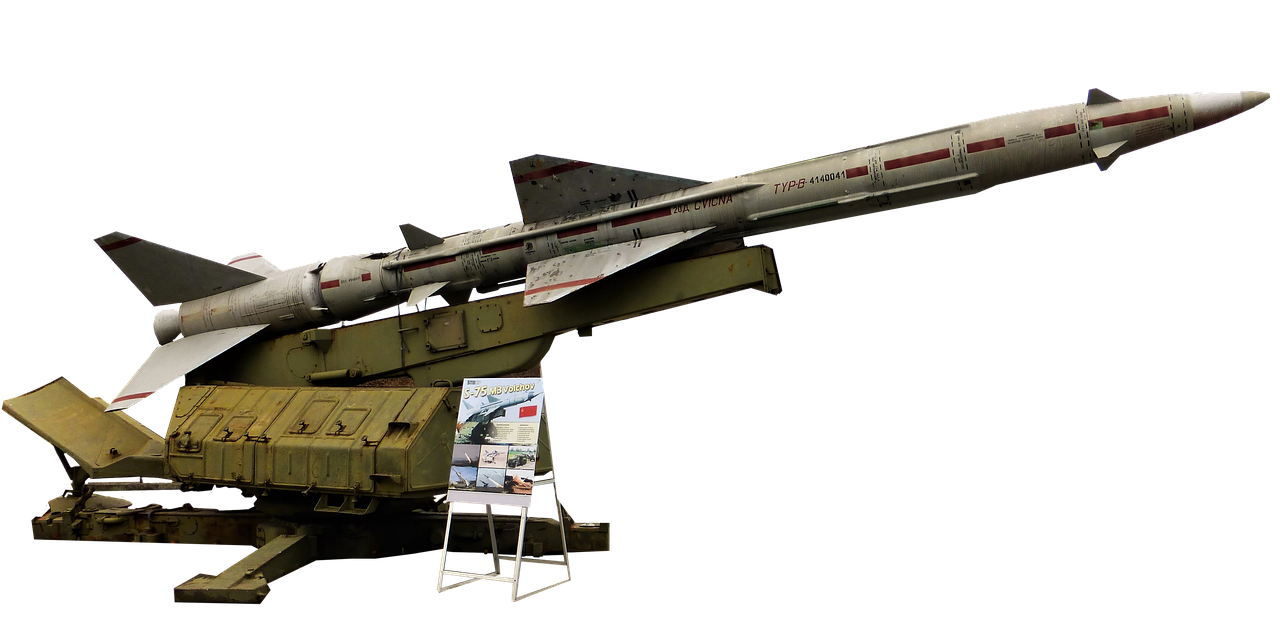
Future Trends in Virtual Training
The future of virtual simulations in military training is not just bright; it's practically glowing with potential! As technology continues to advance at a breakneck pace, the military is poised to harness these innovations to create training environments that are more effective, engaging, and realistic than ever before. Imagine stepping into a training scenario where every detail is tailored to your needs, where the environment reacts to your actions in real-time, and where you can practice complex maneuvers without the constraints of the physical world. This is not science fiction; this is the future of military training.
One of the most exciting trends on the horizon is the integration of artificial intelligence (AI) into virtual simulations. AI has the potential to revolutionize how soldiers train by providing personalized experiences that adapt to individual performance. For instance, if a soldier struggles with a particular scenario, the AI can modify the training module to present similar challenges, allowing for targeted skill development. This kind of adaptive learning ensures that no soldier is left behind and that everyone receives the training they need to excel.
Furthermore, the incorporation of enhanced collaboration tools is set to transform how military personnel train together. As remote operations become more common, the ability to train in a virtual environment with teammates from different locations will be crucial. Imagine a scenario where soldiers from various units can come together in a shared virtual space, executing missions collaboratively while honing their communication and teamwork skills. This kind of training fosters a sense of camaraderie and prepares soldiers for the realities of modern warfare, where coordination across distances is essential.
In addition to AI and collaboration tools, we can expect to see advancements in immersive technologies, such as virtual reality (VR) and augmented reality (AR). These technologies will create even more lifelike training scenarios, allowing soldiers to engage in realistic combat situations without the associated risks. For example, VR can simulate high-pressure environments where soldiers must make split-second decisions, while AR can overlay critical information onto the real world, enhancing situational awareness during training exercises.
As we look to the future, it’s clear that the military's approach to training is evolving. The integration of these advanced technologies will not only improve operational readiness but also enhance the overall training experience for soldiers. By embracing innovation, the military can ensure that its personnel are prepared for the complexities of modern warfare, equipped with the skills and knowledge necessary to succeed in any situation.
- What is the role of artificial intelligence in military training?
AI can personalize training experiences by adapting scenarios to individual soldier needs, enhancing skill development and retention. - How do immersive technologies improve training?
Immersive technologies like VR and AR create realistic environments that engage soldiers, making training more effective and memorable. - What benefits do collaboration tools offer in virtual training?
Collaboration tools enable remote training, fostering teamwork and communication skills essential for successful missions. - Will virtual training replace traditional methods?
While virtual training will complement traditional methods, it is unlikely to fully replace them. A blended approach will provide the most comprehensive training.

Artificial Intelligence Integration
As we march into the future, the integration of artificial intelligence (AI) into virtual simulations is emerging as a game-changer in military training. Imagine a training environment that adapts to each soldier's unique learning pace and style, much like a personalized coach guiding you through a challenging workout. This is the promise of AI in military simulations. By analyzing performance data in real-time, AI can modify scenarios to ensure that each participant is consistently challenged yet not overwhelmed. This tailored approach not only enhances skill acquisition but also boosts confidence, preparing soldiers for the unpredictable nature of real-world operations.
One of the most exciting aspects of AI integration is its ability to create dynamic training scenarios. Traditional simulations often rely on pre-set conditions, which can become predictable and less effective over time. However, with AI, the training environment can evolve based on the actions and decisions of the participants. For instance, if a soldier demonstrates exceptional decision-making skills under pressure, the AI can escalate the difficulty level, introducing new challenges that require quick thinking and adaptability. This continuous loop of assessment and adjustment makes training not only more engaging but also more relevant to the complexities of modern warfare.
Moreover, AI can facilitate data-driven insights that enhance training outcomes. By collecting and analyzing vast amounts of data from training exercises, military leaders can identify trends and areas for improvement across their units. This analysis can lead to informed decisions about training strategies, ensuring that resources are allocated effectively and that each soldier receives the support they need to excel. For example, if data shows that a particular unit struggles with communication during joint operations, targeted training modules can be developed to address this gap.
Additionally, the potential for collaboration in AI-enhanced simulations is noteworthy. Imagine soldiers from different branches or even allied forces training together in a virtual environment, where AI seamlessly integrates their efforts into a cohesive mission. This not only fosters teamwork but also builds trust among units, which is crucial for successful operations in the field. The ability to train collaboratively, regardless of geographical barriers, can significantly improve joint task force readiness, making it an invaluable asset in today’s interconnected military landscape.
In summary, the integration of artificial intelligence into virtual simulations is set to revolutionize military training. By providing personalized experiences, creating dynamic scenarios, delivering data-driven insights, and fostering collaboration, AI not only enhances operational readiness but also prepares soldiers to face the complexities of modern warfare with confidence and skill. As technology continues to evolve, the military's approach to training will undoubtedly become more sophisticated, ensuring that our forces remain at the forefront of readiness and effectiveness.
- What is the primary benefit of integrating AI in military training?
AI allows for personalized training experiences, adapting scenarios in real-time to better develop individual soldier skills. - How does AI improve the realism of training simulations?
AI creates dynamic scenarios that evolve based on soldiers' actions, making training more relevant and challenging. - Can AI help identify weaknesses in a unit's training?
Yes, AI analyzes performance data to highlight trends and areas for improvement, enabling targeted training adjustments. - What role does collaboration play in AI-enhanced simulations?
Collaboration in AI simulations fosters teamwork and trust among different military units, improving joint operational effectiveness.

Enhanced Collaboration Tools
As we look towards the future of military training, one of the most exciting developments is the integration of within virtual simulations. Imagine a training environment where soldiers can connect and collaborate in real-time, regardless of their physical location. This is not just a possibility; it’s becoming a reality. With advancements in technology, military personnel can now engage in immersive training exercises that mimic the complexities of real-world operations while fostering teamwork and communication skills.
These tools facilitate a more interactive and engaging training experience. For instance, soldiers can participate in joint missions, strategizing and executing plans together, much like they would in actual combat scenarios. This collaborative aspect is crucial because it allows for the development of team dynamics and enhances the ability to function as a cohesive unit under pressure. Think of it as a virtual battlefield where each participant plays a vital role, and their success hinges on effective communication and collaboration.
Furthermore, enhanced collaboration tools can include features such as video conferencing, shared virtual whiteboards, and real-time strategy simulations. These elements not only make training more engaging but also allow for immediate feedback and adjustments. For example, during a simulated mission, if a team member makes a mistake, others can quickly discuss and analyze the situation. This immediate debriefing process is invaluable, as it reinforces learning and ensures that everyone is on the same page.
Additionally, the use of virtual reality (VR) and augmented reality (AR) technologies can further enhance these collaborative tools. Imagine soldiers wearing VR headsets, where they can visualize and interact with a 3D battlefield, while simultaneously communicating with their teammates through integrated audio systems. This not only makes the training more realistic but also helps in developing spatial awareness and tactical decision-making skills.
To illustrate the potential of these tools, consider the following table that outlines the core features and benefits of enhanced collaboration tools in military training:
| Feature | Benefit |
|---|---|
| Real-time Communication | Facilitates immediate feedback and decision-making |
| Shared Virtual Spaces | Encourages teamwork and collective strategy development |
| Interactive Simulations | Enhances engagement and retention of skills |
| Performance Analytics | Allows for tailored training based on individual and team performance |
In conclusion, the future of military training is being transformed by enhanced collaboration tools that not only improve the training experience but also prepare soldiers for the realities of modern warfare. By fostering a culture of teamwork and real-time interaction, these tools are paving the way for a new era of operational readiness. As we embrace these technologies, we can expect to see a significant improvement in the effectiveness of military training programs, ultimately leading to better-prepared personnel ready to tackle the challenges of the battlefield.
- What are enhanced collaboration tools in military training?
These are advanced technologies that allow military personnel to connect, communicate, and collaborate in real-time during virtual simulations. - How do these tools improve training?
They foster teamwork, enhance communication, and provide immediate feedback, which are essential for effective military operations. - Can these tools be used for remote training?
Yes, enhanced collaboration tools enable soldiers to train together from different locations, making training more flexible and accessible. - What technologies are involved in enhanced collaboration?
Technologies such as virtual reality (VR), augmented reality (AR), video conferencing, and shared virtual environments are commonly used.
Frequently Asked Questions
- What are the main benefits of using virtual simulations in military training?
Virtual simulations provide numerous advantages, such as cost-effectiveness, risk reduction, and the ability to replicate complex scenarios. This allows military personnel to train in a safe and controlled environment, enhancing their operational readiness.
- What types of virtual simulations are available for military training?
There are various types of virtual simulations, including computer-based training programs that offer foundational knowledge, scenario-based training that immerses participants in realistic situations, and immersive environments like virtual and augmented reality that create engaging training experiences.
- How does scenario-based training improve decision-making skills?
Scenario-based training places participants in dynamic challenges that require quick thinking and effective decision-making. By responding to realistic situations in a controlled setting, soldiers enhance their critical thinking abilities and learn to adapt to changing circumstances.
- What is the role of assessment and feedback in virtual simulations?
Effective assessment and feedback mechanisms are crucial in virtual simulations as they allow trainers to evaluate performance, identify areas for improvement, and tailor future training sessions to meet individual needs, ultimately enhancing the training experience.
- How do hybrid training models work?
Hybrid training models combine both virtual and live training components, allowing soldiers to practice skills in various contexts. This approach ensures comprehensive preparation for diverse operational scenarios and optimizes training budgets by reducing the need for physical resources.
- What future trends can we expect in virtual military training?
The future of virtual simulations in military training looks bright, with advancements in technology leading to more sophisticated tools. We can expect the integration of artificial intelligence for personalized training experiences and enhanced collaboration tools that allow remote training among military personnel.



